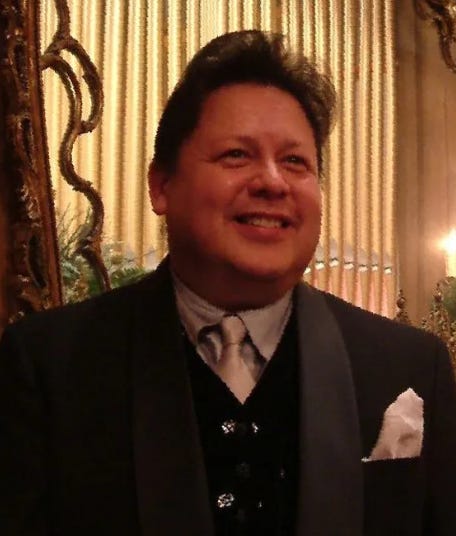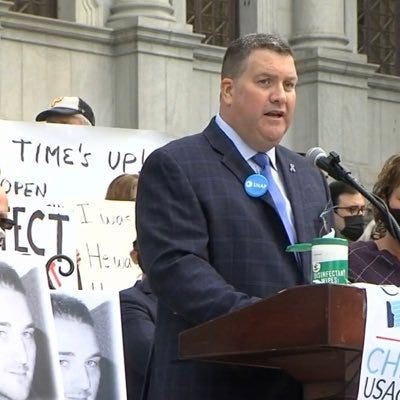HOUSTON (TX)
The Catholic Observer [Baltimore MD]
August 21, 2024
By Gary Gately
The annual SNAP conference highlighted the need for reforms to hold religious organizations accountable, including lifting statutes of limitations on child sexual abuse claims.
For more than 15 years, David Clohessy says, he fondly recalled all the camping, skiing, canoeing and hiking trips with his parish priest, Father John Whiteley.
Then while watching “Nuts” with his girlfriend (now his wife, Laura) — a movie in which the protagonist suffered sexual abuse as a child — it all came rushing back to Clohessy: waking to the priest lying on top of him, sexually molesting him, then turning over and drifting off to sleep.
Recalling the long-suppressed sexual abuse that he suffered over the course of four years as a child, Clohessy curled up into a fetal position and sobbed uncontrollably.
Since then, Clohessy, now 67, has cried almost every day over the abuse by the priest at St. Pius X, his parish in the Diocese of Jefferson City, Missouri — and the abuse so many others have suffered at the hands of clergy and other Catholic Church employees.
The abuse victims of Father Whitely — listed by the Church as “credibly accused” but never criminally charged — include three of Clohessy’s brothers. Among them: Kevin Clohessy, who went on to become a priest who sexually abused a student in 1993 at Northeast Missouri State University, where he was assigned. He was also accused of abusing a boy and another priest and has since left the priesthood.
For his part, David Clohessy has transmuted his own trauma and pain into shining a light into sexual abuse in the Catholic Church, as one of the founding members and for nearly three decades the national director of the Survivors Network of those Abused by Priests (SNAP), the country’s longest-active support group for victims of clergy abuse.
Clohessy — who has survived a brain tumor, throat cancer and prostate cancer — retired from that position in 2016, but remains an outspoken advocate for abuse survivors as volunteer director of Missouri SNAP.
His influence extends well beyond the state. He writes widely on sexual abuse in the Catholic Church for religious and secular publications and calls out Church hierarchy often for what he characterizes as continuing widespread, systematic cover-up of abuse.
Clohessy joined about 200 others over the weekend for the 35-year-old SNAP’s annual conference in Houston. (He’s never missed one.)
He says a “sizable minority” of victims repress the memories of sexual abuse, as he did.


“It’s way more common than people understand or can believe,” Clohessy told The Catholic Observer. “Our young psyches are often just totally incapable of handling such horror and unconsciously shut down as a survival mechanism.”
Mary Dispenza counts herself among them.
For 43 years, she hid her sexual abuse by a priest — starting in 1947 when she was 7 — from herself and from everyone else. Father George Neville Rucker had repeatedly sexually abused her over the course of two years at St. Alphonsus School in East Los Angeles and in his bedroom at the parish rectory, Dispenza told The Catholic Observer.
The flashbacks came when Dispenza was a 52-year-old nun attending a workshop titled “Sexual Misconduct on the Part of the Clergy” as the director of the Pastoral Life Services Department in the Archdiocese of Seattle.
“It took me over half a lifetime to face that abuse because I did what most survivors do, which is to dissociate in order to live,” she says.
Dispenza chose the Sisters of the Sacred Heart of Mary and became a teacher and later principal of St. Alphonsus School, where Rucker had sexually assaulted her.
She had been the first of 38 children Rucker was accused of molesting. He was criminally charged in 2002 with 29 counts of molesting seven girls in East Los Angeles during the 1970s, but the U.S. Supreme Court struck down a California law extending the statute of limitations on sexual crimes against children, ending prosecutors’ case against him. Rucker has since died.
The Archdiocese of Los Angeles agreed in 2017 settlement to pay $60 million to settle lawsuits filed by Dispenza and 44 other sexual abuse victims.
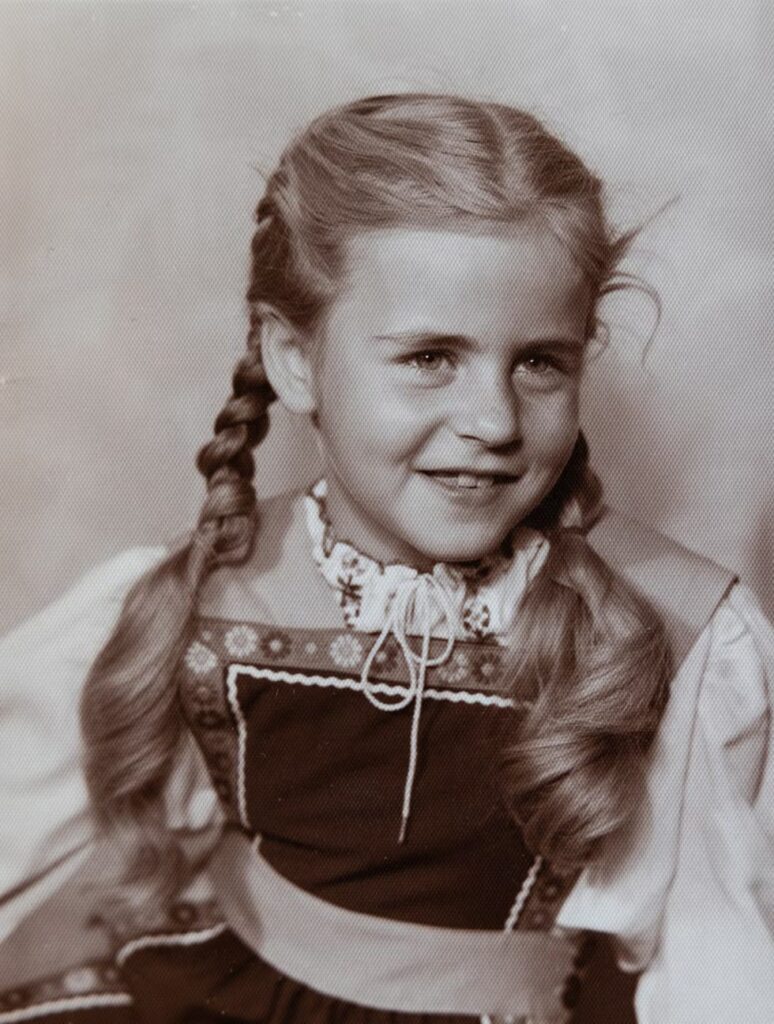
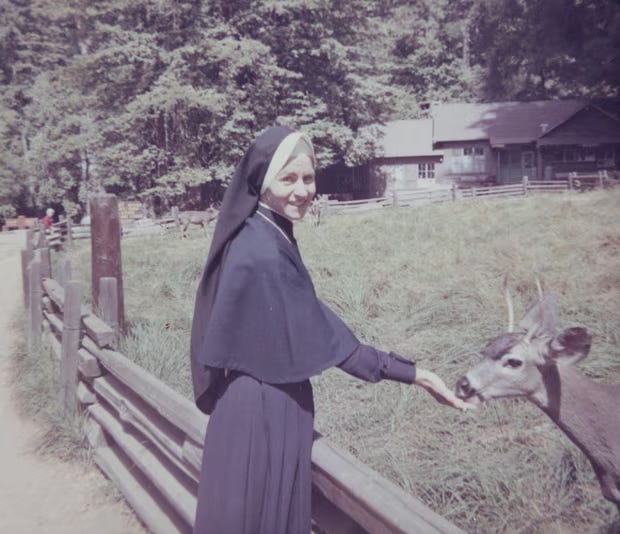
Like Dispenza, most sexual abuse victims have been shadowed by self-blame and guilt, many of them falsely assuming they somehow enticed holy people to sin, Clohessy says.
“They think, ‘I’ve done a terrible thing; I caused this holy man to sin,’” he says. “One of the first things we say to victims is: ‘You may not believe it but none of this was your fault.’”
Predators often actively seek to make their victims feel complicit by, for example, blaming victims for tempting them sexually. The abusers also often warn their victims of dire consequences — even that they would go to hell or never see their loved ones again — if they told anyone about the abuse.
SNAP sharply criticized widespread statutes of limitations (SOL) on abuse claims that prevent many victims from ever getting justice.
“Because of these arbitrary, predator-friendly laws with tight deadlines, the overwhelming majority of victims of child sexual abuse have zero chance of exposing their perpetrator in what many feel is the best and safest way: in a courtroom,” Clohessy says. “That means that most adults who hurt kids — and most adults who enable that harm, by action or inaction — are never caught, exposed or punished. And that, of course, means that the crimes and cover-ups continue, and countless young lives are forever devastated.”
Eduardo Lopez de Casas, SNAP’s vice president, says he had long kept secret being abused as a child by a priest as well as two teachers and a scoutmaster in Galveston, Texas.
“I was abused over 50 years ago, so as for any type of justice for people like me, it’s just understood that it’s never gonna happen,” Lopez de Casas, now 63, told The Catholic Observer. “But if we can find a break in the window on filing claims that we can open here in Texas, it would give people like me a chance to find justice before we die, and thousands of other victims would come forward.”
Lopez de Casas says he’s hopeful now that some Texas lawmakers have vowed to try to extend the statute of limitations.
That came after Robert Morris, the pastor of the Southlake, Texas, megachurch Gateway Church resigned in June amid allegations that he had repeatedly sexually molested Cindy Cleminshire starting when she was 12.
Cleminshire, now 54, delivered the keynote address at this year’s SNAP conference, stressing the need for reform of SOL laws to greatly expand the window for criminal charges and civil claims.
Michael McDonnell, SNAP’s communications director, says he was sexually abused more than 50 times as a child by two since “credibly accused” priests at St. Titus Church in the Philadelphia suburb of Norristown, Pennsylvania. McDonnell had long kept the abuse a secret, attempting to blunt the trauma and shame with drug and alcohol abuse, and it contributed to failed marriages as well, he says.
When McDonnell finally reported the abuse, he could no longer sue because of Pennsylvania’s statute of limitations on sexual abuse claims, capped in most cases at age 30 for civil claims and 32-50 for criminal cases.
“My life would have been totally different if the Church had protected the sheep instead of the abusive shepherd,” McDonnell says. “You ask that 11-year-old who was me about sexual experiences with the priest, and they say, ‘Never.’ What I learned is you are literally shocked into withholding a lie, and you’re lying only to yourself.”
Six years ago, a grand jury report showed that more than 300 Catholic priests across Pennsylvania sexually abused more than 1,000 children — and probably thousands more — over the course of seven decades.
But state lawmakers remain deadlocked over a whether to put on the November ballot a constitutional amendment that would extend the statute of limitations on child sexual abuse.
In May, Pennsylvania Governor Josh Shapiro, who was the state’s attorney general when the grand jury released its damning report in 2018, criticized state GOP lawmakers for not reviving a constitutional amendment to extend the window that had been passed by both houses of the legislature. The amendment was pulled because the administration of former Governor Tom Wolf failed to advertise it, as required.
“I think it shameful that the Senate of Pennsylvania has failed to act and unwilling to look survivors in the eye and pass a statute of limitations to allow those who have been abused to confront their abusers in a court of law,” Shapiro said.
But SNAP and other advocates for child sexual abuse victims cite some important victories, as 15 states reduced or eliminated the SOL last year for filing civil claims or bringing criminal charges.
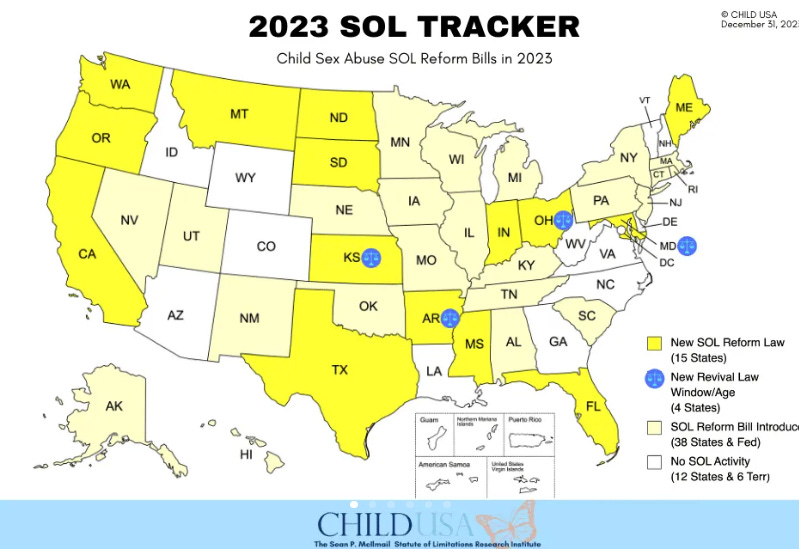
Catholic dioceses, however, have increasingly resorted to bankruptcy to avoid bad press and preclude future litigation against them.
More than two dozen dioceses have adopted this strategy, which means bankruptcy courts set a deadline for victims to file claims, effectively overriding state SOL reforms, enabling dioceses to resolve all claims with a batch settlement rather than litigating each of them individually.
Across the country, at least 25 state attorneys general have conducted investigations into sexual abuse in the Catholic Church, and at least nine have issued reports on their findings. Some of the investigations uncovered evidence of much more widespread abuse than what Church officials had voluntarily disclosed.
The U.S. Conference of Catholic Bishops (USCCB) did not respond to requests for comment for this story.
In June, the USCCB released a report showing that from mid-2022 to mid-2023, just over 1,300 clerical abuse allegations came to light in the U.S. and that payouts to victims reached $284 million. Abuse allegations declined from 2,704 allegations in the prior year-long span and from 4,434 in 2019-2020.
“These numbers are not just numbers,” USCCB President Archbishop Timothy Broglio wrote in his preface to the June report. “The statistics are the many stories and accounts of the betrayal of trust and the lifelong journey towards recovery.”
Most of the allegations involved abuse that victims claim happened decades ago.
The USCCB has pointed to safeguards to protect sexual against abuse that it first adopted in 2002 after a Boston Globe investigation into abuse in the Archdiocese of Boston thrust the sexual abuse of minors by Catholic clergy into the national spotlight.
The Dallas Charter, which spells out the USCCB safeguards, details procedures for addressing allegations of sexual abuse of minors by Catholic clergy, and includes guidelines for reconciliation, healing, accountability and prevention of abuse. In the charter, the bishops pledged to hold offenders accountable; ensure “prompt and effective response to allegations”; cooperate with civil authorities; institute a “process of accountability”; and foster healing and reconciliation among victims and survivors.
Clohessy, along with other advocates for survivors of clergy abuse, however, say individual dioceses, which handle abuse claims, continue their cover-up of abuse.
Indeed, new lawsuits alleging abuse and cover-up and by Church hierarchy have become almost numbingly frequent.
Clohessy also predicts a new wave of new litigation will target dioceses for failing to keep promises they made in settlements with abuse survivors.
He points to a legal challenge to the Archdiocese of Santa Fe. A reorganization plan approved in December 2022 required the archdiocese to pay about $121.5 million into a settlement trust and establish a new public archive of clergy sexual abuse documents.
The name of a woman who was sexually abused as a child and received compensation from the archdiocese from its settlement trust last January was never added to the archdiocese’s list of clergy abusers, according to her attorney. That violates the archdiocese’s agreement to do so as part of the settlement, the attorney says.
The woman and her attorneys say more than 50 additional clergy identified as abusers in the bankruptcy suit also have not been added to the archdiocese’s list.
In the settlement, the archdiocese committed to listing on its website all the accused offenders identified during Chapter 11 proceedings — even those against whom allegations were deemed “not credible” or “unsubstantiated” by church officials, according to the attorney, Levi Monagle, who has represented dozens of clergy sex abuse victims.
In an August 5 National Catholic Reporter column, Clohessy wrote that the Santa Fe case could open the door to many others claiming dioceses have violated promises made in settlements.
“I strongly suspect that it has sent plenty of shivers up the spines of Catholic officials across the country. And I predict that it will inspire other similar cases soon,” Clohessy wrote.
SNAP also stressed at the conference that abuse allegations against Catholic nuns are much more widespread than even most Catholics know.
Mary Dispenza is acutely aware that untold numbers of nuns have physically and sexually abused children and one another.
Dispenza’s love of the Church led to her entering the convent right out of high school and in 1988, then-President George H.W. Bush bestowed upon her the prestigious National Distinguished Principal award.
But after she came out as a lesbian while working in the Pastoral Services Department of the Archdiocese of Seattle, she was fired in 1992.
Only after leaving her religious community did she remember a superior repeatedly kissing her when she was a postulant in the late 1950s.
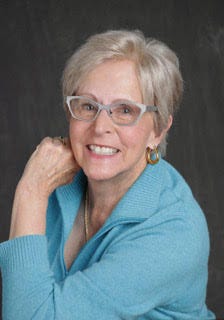
Dispenza has since become a leader of SNAP’s Survivors of Abuse by Nuns/Women Religious.
“We’ve heard so much about priests who abuse and so little about nuns who abuse that it’s time to restore the balance,” she said in a speech at the SNAP conference.
“Many Catholics still hold a positive image of nuns. We don’t. That’s for sure. Mostly, society thinks of nuns as smart, funny, kind, good, mysterious, magical, holy, maternal, and pure — the handmaids of the lord, married to god, vowing poverty, chastity, and obedience. While that is true for some, it is also true that many of us knew them as pedophiles, sexual predators, raping and abusing, confusing, ridiculing, hitting, beating, shaming, embarrassing, torturing, bullying, even pretending to be in love with us.”
Nuns, Dispenza said, have often abused children in Catholic schools, orphanages, Native American boarding schools.
“I know It’s a shock for many people to think nuns tortured and physically and sexually abused children,” Dispenza said. “But they did, especially during the 40s, 50s, 60s and early 70s.”
SNAP has increasingly focused on rampant abuse at Native American boarding schools run by the Catholic Church as well as some other religions through the late 1960s.
Nearly 1,000 children died while attending boarding schools that the federal government established to assimilate the children, the federal government reported in June.
Catholic-run boarding schools — at least 80 of them — are among more than 500 boarding schools, most affiliated with religions, that hundreds of thousands of Native American children attended in the 19th and 20th centuries. Children at the schools suffered physical, psychological and at times sexual abuse.
U.S. bishops apologized in June for inflicting on Indigenous Catholics a “history of trauma,” particularly at Church-run boarding schools, and pledged to atone and build bridges between the Church and Native communities.
“The family systems of many Indigenous Peoples never fully recovered from these tragedies [at the boarding schools], which often led to broken homes harmed by addiction, domestic abuse, abandonment, and neglect,” the bishops wrote in the apology. “The Church recognizes that it has played a part in traumas experienced by Native children.
“We apologize for the failure to nurture, strengthen, honor, recognize, and appreciate those entrusted to our pastoral care.”
But the apology did not specifically mention decades of widespread sexual abuse at the boarding schools by Catholic priests, nuns, brothers and sisters, most recently documented in May by The Washington Post.
Now, the U.S. bishops want to have a seat at the table if Congress enacts the “Truth and Healing Commission on Indian Boarding School Policies Act,” which would create committees and subcommittees to investigate past abuses at the schools.
U.S. Bishops’ Conference chairmen wrote in a recent letter to members of Congress: “We are committed to transparency, to listening, and to humility in prayerfully walking together on this difficult path, and we stand ready to work with you on efforts to bring the truth forward towards that end of healing and reconciliation.”
The Truth and Healing measure would put on the panels Indigenous associations and members of federal departments, but the bishops argue Catholic and Protestant members should also be included, given they ran hundreds of the schools.
“It seems like an omission if the government, which was the genesis of the boarding schools, has a ‘seat at the table,’ but religious communities do not,” the U.S. Bishops’ Conference chairmen wrote. “Healing and reconciliation are only possible if all parties are involved. A listening process presupposes that different partners are engaged in the dialogue.”
The letter also said investigative panels should not be granted broad subpoena powers when “the Church has been cooperative with the investigation since it began, and not denied any records requests.”
“We believe strongly that the Commission can and should avoid an adversarial posture since we have expressed desire for transparency and cooperation in making this history more available to the public, and have thus far not been given an opportunity to cooperate voluntarily with government efforts to bring this history to light,” the USCCB chairmen said.
SNAP’s Clohessy took issue with the bishops’ claims.
“Decades of broken promises on abuse by church officials that continue to this day lead any reasonable person to be skeptical when bishops claim they’re willing to expose the full horror of what predatory clerics and the corrupt supervisors have done to tens of thousands of innocent kids and vulnerable adults,” he says.
“Bishops must be judged by their deeds, and their deeds, over decades, paint a picture of relentless secrecy, no matter what their public posture may be. In public, bishops say they care, they’ve reformed, but in private — in boardrooms and mediation sessions and even courthouses — almost without exception, they push to keep information about those who commit and conceal heinous child sex crimes hidden.”
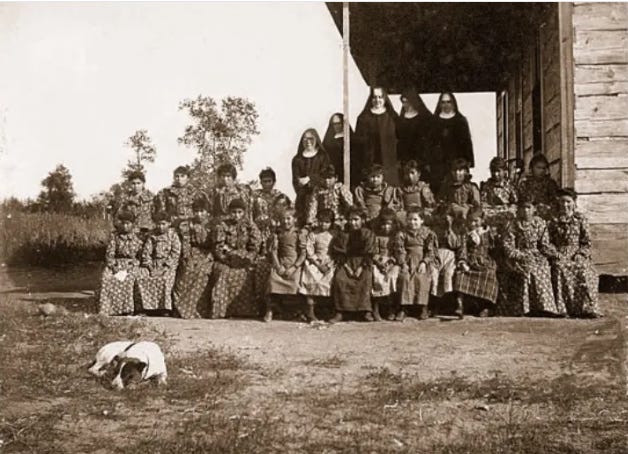
The Catholic Observer is a reader-supported publication. To receive new posts and support my work, consider becoming a free or paid subscriber.


